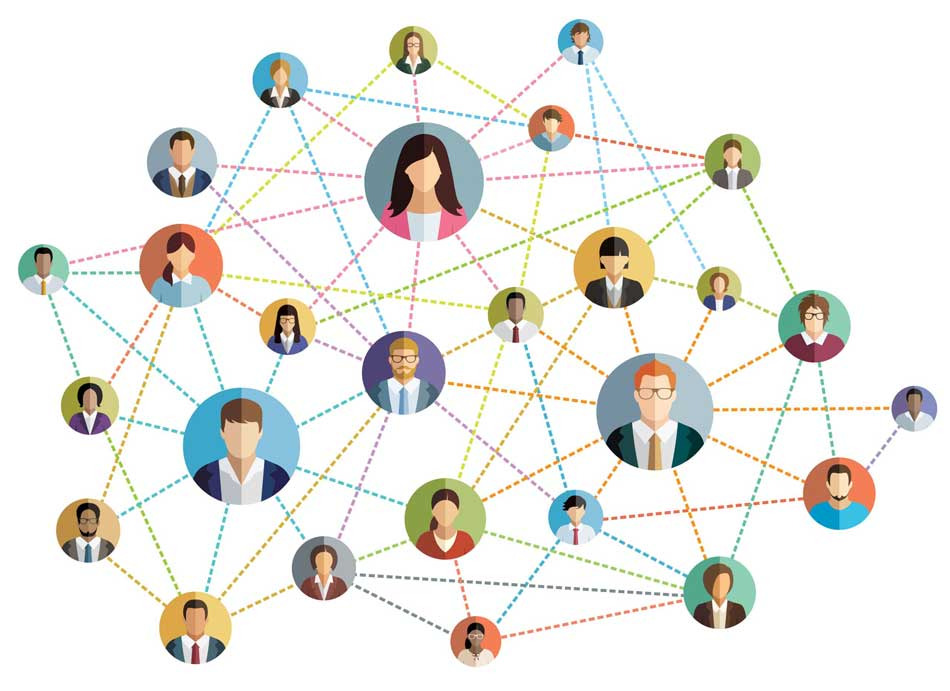Have you ever wondered how everyone at your office got to know about your promotion before you announced it? Or how a disease like Ebola engulfs country after country? You might have thought- Is their pattern of this occurrence? Is there something that’s going on around me that I haven’t noticed earlier? All your questions will be answered subsequently but first, let’s examine some more similar phenomena.
In every family, there is one member who is connected with everyone in the family. Therefore, This member usually conveyed messages which are meant to reach all the members of the family. Moreover, such types of people can also be found in friend circles as the one who knows everything about everyone. One can also find a person who is often seen as someone with connections. Do you find anything common between all these examples?
One thing that makes all these examples synonymous is the fact that every example has one person who spreads information and that particular person proves to be vital in each network. The fact that makes that particular person significant is their ability to spread messages rapidly in a social network.
Till now, you might have probably figured out how Ebola spread in various or how the news of your promotion spread in the office. Yes, these events are also catalyzed by the probable spreaders in these networks.
Each year millions of dollars are spent on the identification of the spread of information through various channels. In this new era of social networks and growing connections, one needs to understand the spread of information. For an effective advertising strategy, one needs to understand the spread of information through the consumers. It is essential to study its pattern to devise advertising strategies. In times of pandemic, one cannot mitigate the importance of Identification of the spreaders of diseases. Thus, it becomes very important to identify probable spreaders to curb its spread.
These were some instances where one can exercise Social Network Analysis to find spreaders. Still, the question remains –
How can one identify a spreader?
A spreader can be identified by modeling the interaction between members of a population. Each member is denoted as a node and the interaction between the members (node) is known as the edge. , the social Network Analysis is used to study the interaction of each node to measure the extent of spread. Then they have ranked accordingly and higher ranks are Spread.
One might ponder what exactly one means by the term social network analysis. A report on social network analysis explains it as follows
A social network captures the intricate web of interactions among social entities, where each entity could be representative of an individual or even a group of individuals. The type of interaction captured in a social network such as friendship, email communication, buyer-seller may seem to vary largely. But studies showed that these interactions have certain commonalities such as the presence of a community structure, core-periphery structure, and scale-free distribution. Thus, social network analysis deals with modeling social interactions as a graph consisting of nodes (denoting a member of the network) and edges (indicating each interaction).
Amidst the voracious spread of COVID 19, scientists and the government worked strenuously to find ways to curb its spread. In this chaos, social network analysis (SNA) did what many techniques failed to do. Using SNA scientists identified infected people with maximum social interactions and then officials contained these people to prevent the spread. In technical terms, these people are identified as spreaders.
After a spreader is detected in a social network, scientists use contact tracing to prevent the spread of COVID at various places. It also aided in the identification of COVID hotspots and also in deciding which area to be put into containment.

Social network analysis when used in an organizational context is called Organisational network analysis (ONA). ONA is used in the Identification of spreaders in workplaces to catalyze the spread of information. Feedbacks are crucial for any workplace that is looking forward to improving its employee experience. A spreader can be used in offices to collect feedback from fellow employees. To understand this we need to understand that a spreader is someone who has interactions with almost everyone in a workplace and that person can employ their connections to collect feedback.
Organisation network analysis (ONA) can also aid in identifying the spreader in an office network. And these spreaders can be used to stop the spread of negative culture or to promote a positive culture in the workplace. One can also use ONA to promote a new strategic change in the organization via top spreaders in the network.
After reading this, one might have grasped the significance of spreaders in social networks and how the identification of them can stop or catalyze the flow of information in various agencies and social networks. One should not jump straight to the conclusion that the effectiveness of spreaders is limited to analyzing the spread of Covid. This concept has also shown exceptional results when it comes to tracking influencers and enabling information contagion.

Well organised and beautifully curated article. Learned a lot from it.